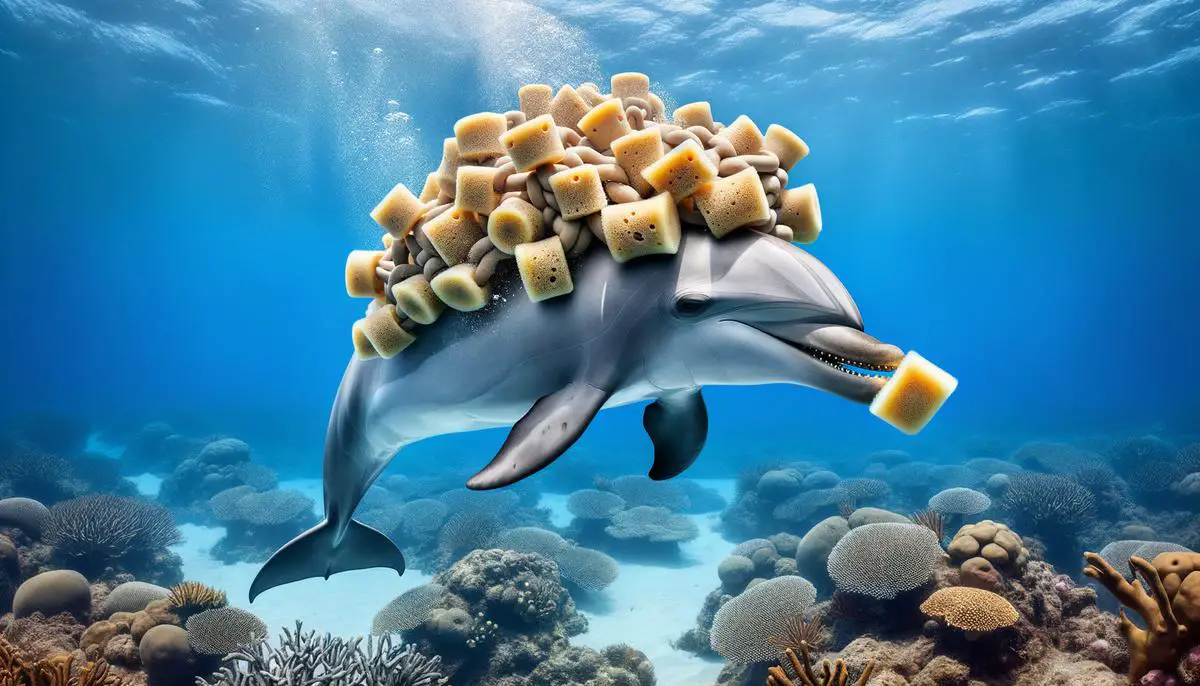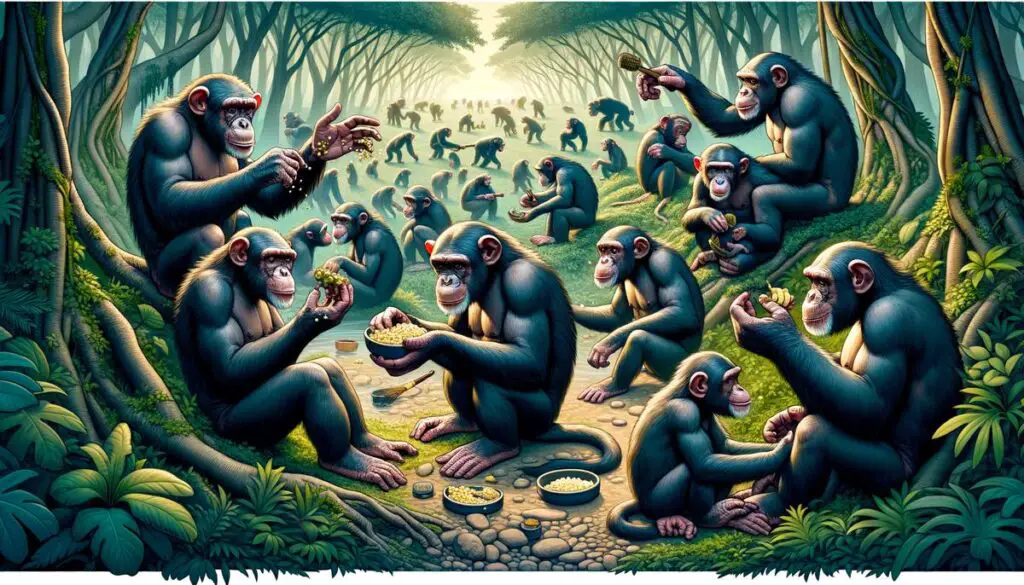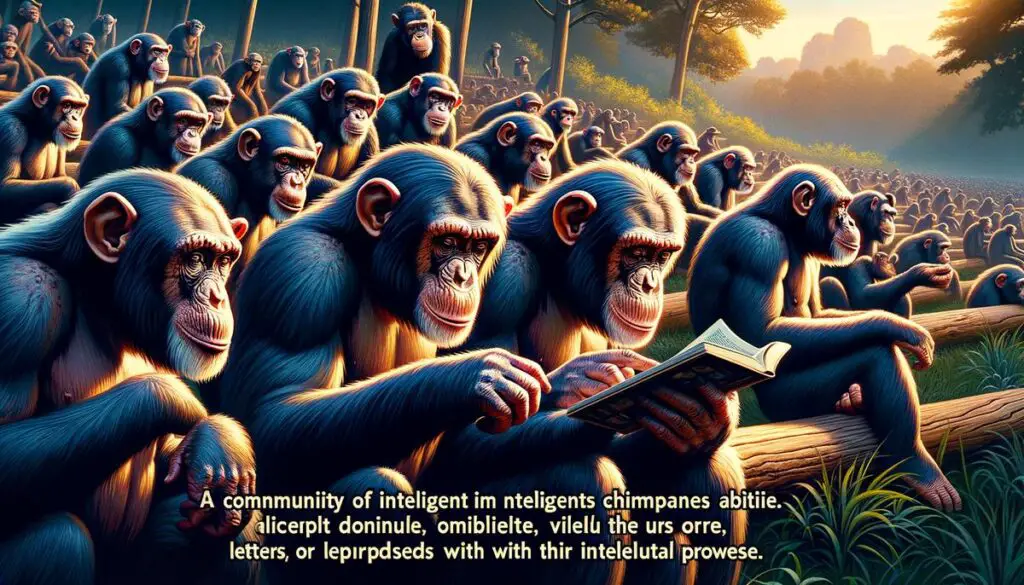Animal IQ Ranking List: Top 30 Most Intelligent Animals in the World

Exploring the animal kingdom reveals a fascinating tapestry of life, where intelligence and emotion bridge the gap between humans and our animal counterparts. This article shines a light on the most intelligent animals on the planet – each showcasing unique qualities that not only draw us closer to nature but also mirror aspects of human behavior. Through understanding these animals, we gain insights into the complexity of life on Earth and our interconnectedness with the natural world.
Ranking animal intelligence is a complex task because intelligence manifests differently across species. Each species has its own strengths and areas of expertise. Here’s a list of the 30 most intelligent animals in the world, prioritizing those considered to exhibit the most complex cognitive abilities.
| Rank | Animal | Intelligence Factor |
|---|---|---|
| 1 | Chimpanzees (Common) | Tool use, problem-solving, self-recognition |
| 2 | Bonobos | Peaceful nature, communication, problem-solving |
| 3 | Orangutans | Tool use, problem-solving, complex social structure |
| 4 | Dolphins (Bottlenose) | Object recognition, communication, social learning |
| 5 | Elephants (African) | Excellent memory, strong social bonds, complex problem-solving |
| 6 | African Grey Parrots | Mimicry, complex problem-solving, social bonds |
| 7 | Crows | Problem-solving, tool use, social cooperation |
| 8 | Octopuses (Common) | Problem-solving, maze navigation, quick learning |
| 9 | Dogs (Border Collies) | Exceptional trainability, problem-solving, herding skills |
| 10 | Keas (New Zealand parrots) | Problem-solving, tool innovation, curiosity |
| 11 | Spider Monkeys | Complex social structure, communication, problem-solving |
| 12 | Gorillas | Complex social structure, communication, tool use (debated) |
| 13 | Dolphins (Common) | Communication, tool use, playfulness |
| 14 | Squirrels (Grey) | Spatial memory, complex foraging strategies, tool use (debated) |
| 15 | Honey Bees | Complex communication (dance language), social organization |
| 16 | Octopus (Giant Pacific) | Problem-solving, escape artistry, long-term memory |
| 17 | Parrots (Many Species) | Mimicry, complex vocal learning, social interaction |
| 18 | Ravens | Problem-solving, tool use, memory, social cooperation |
| 19 | Magpies | Problem-solving, tool use, self-recognition (debated) |
| 20 | Dolphins (Spinner) | Cooperative hunting, acrobatics, complex social interactions |
| 21 | Elephants (Asian) | Complex social structure, communication, self-awareness |
| 22 | Whales (Killer) | Complex hunting strategies, communication, social cooperation |
| 23 | Chimpanzees (Pygmy) | Tool use, communication, complex social structure |
| 24 | Dolphins (Spotted) | Cooperative hunting, tool use, complex social behavior |
| 25 | Octopuses (Mimic) | Camouflage, communication, problem-solving |
| 26 | Chimpanzees (Western) | Tool use, communication, complex social structure |
| 27 | Parrots (African Green) | Mimicry, complex problem-solving, strong social bonds |
| 28 | Jays (Blue) | Acorns storage, spatial memory, complex communication |
| 29 | Cuttlefish | Camouflage, communication, problem-solving |
| 30 | Dolphins (River) | Complex social structure, communication, tool use (debated) |
Remember, this is still an approximation, and intelligence manifests differently across species. Some may excel in specific areas like tool use or communication, even if not ranking highest overall.
Chimpanzees: Our Closest Cousins in the Animal Kingdom
Chimpanzees capture our fascination and connect us to the wild in profound ways. Standing as humanity’s closest living relatives in the animal kingdom, these remarkable creatures offer a window into the soul of nature and perhaps a reflection of ourselves. Their place in our shared world, teeming with life and mysteries, holds a special significance in understanding the intricate tapestry of life on Earth.
Starting with the science, chimpanzees share a stunning 98.7% of their DNA with humans. This genetic closeness reveals itself in behaviors that feel strikingly familiar. They use tools, exhibit strong family bonds, and can express a range of emotions — from joy to sorrow. Watching a group of chimpanzees interact, it’s not hard to see reflections of human social dynamics, hinting at a common ancestor who walked the Earth some six million years ago.

Navigating Complex Social Systems
Chimpanzees live in multifaceted societies, showcasing an exceptional grasp of their social environment. This involves intricate alliances and a deep understanding of social hierarchies. They recognize familial ties, friendships, and even rivalries, maneuvering through these relationships with astuteness that rivals human political intrigues.
Strategic Hunting Techniques
When it comes to securing a meal, these primates demonstrate calculated strategies that underscore their intellectual might. Collaborative hunting showcases their ability to plan, anticipate, and execute roles with precise coordination. Witnessing them hunt is like watching a well-orchestrated play where each participant knows their part by heart.
Use of Medicinal Plants
Chimpanzees also harbor knowledge that extends to the botanical. They have been observed selecting and using specific plants with medicinal properties. This rudimentary form of self-medication highlights not only their intellectual prowess but also an intimate understanding of their environment — a living testament to evolution’s ingenuity.

Learning and Teaching
One of the most profound demonstrations of chimpanzee intelligence is their capacity to learn and, remarkably, teach. Young chimpanzees learn tool usage and social norms by observing elders, revealing a culture passed down through generations. This ability to teach — once thought to be uniquely human — underscores the depth of their intellect.
Adapting Tools for Unique Needs
While tool usage among chimpanzees is well-documented, what stands out is their innovativeness. They modify sticks, stones, and leaves to suit specific purposes, from hunting termites to accessing water. This adaptability doesn’t just showcase intelligence; it reveals a playful curiosity to explore and manipulate their world.
Constructing Sleeping Nests
At day’s end, chimpanzees engage in creating sleeping nests high in the canopy. Demonstrating a keen understanding of comfort and safety, these nests are intricately constructed platforms that provide rest and protection. This architectural skill combines knowledge of tree selection, branch weaving, and location — illustrating an advanced level of cognitive function.
Chimpanzees, through these compelling behaviors, invite us into their world — a realm where intellect and adaptability reign supreme. Their actions not only evoke a sense of wonder but also a call to safeguard these remarkable beings and the sanctity of their habitats. In recognizing their mastery, we find a mirror reflecting our own complexity and a reminder of the deep bond we share with all living intelligence on this planet.

Bottlenose Dolphins
Bottlenose dolphins have long captivated our imaginations with their playful antics and undeniable intelligence. These sleek, smiling marine mammals are often the stars of ocean documentaries and aquarium shows, but what exactly sets them apart in the underwater intelligence league? Let’s dive into the remarkable world of bottlenose dolphins to discover what makes them so special.
First off, their social behavior is incredibly complex. Bottlenose dolphins travel in groups called pods, which can contain from a few individuals to over a hundred. Inside these pods, dolphins form close bonds, often collaborating to hunt or look after the young ones. Their social interactions aren’t just about survival; dolphins have been observed playing and demonstrating what seems to be genuine affection for each other.

Then there’s their communication skills. Bottlenose dolphins utilize a vast array of sounds — from clicks to whistles — to communicate with each other. Scientists believe that each dolphin has a unique identifier whistle, essentially a name, that they respond to. This level of sophisticated communication mirrors aspects of human language, placing dolphins at the top of marine animal communicators.
Problem-solving and tool use are other areas where bottlenose dolphins shine. Remarkably, they use sea sponges to protect their noses while foraging on the seafloor, a behavior passed down from mother to offspring. This indicates not just an ability to use tools, which is rare among animals, but also suggests an element of culture and learning within dolphin communities.
Their cognitive abilities don’t stop there; studies show that bottlenose dolphins have a strong memory, considered among the best in the animal kingdom. They can remember the whistles of other dolphins they’ve interacted with years after separation. Such a powerful memory aids in their complex social structures and survival strategies.
Impressively, research also hints at dolphins having a sense of self. Through mirror tests, where animals are shown their reflection to see if they recognize it as themselves, dolphins have demonstrated self-awareness. Not many creatures aside from humans show this level of cognitive sophistication, setting dolphins apart even further.
Furthermore, dolphins exhibit emotional sensitivity, paying close attention to the feelings and well-being of their pod members. This empathetic behavior strengthens their social bonds and reflects their high intelligence levels.
To sum up, bottlenose dolphins are not only masters of the marine world but also possess intelligence and emotional depth that rivals many land-based animals. Their complex social structures, advanced communication skills, problem-solving abilities, long-term memory, and self-awareness position them as outstandingly intelligent creatures of the ocean. In viewing these characteristics, it’s clear why bottlenose dolphins hold a special place in our admiration for marine life and why they stand out prominently in the marine intelligence league.

Elephants: The Gentle Giants With a Memory to Match
Elephants are truly exceptional creatures, not only for their colossal size but also for their profound intelligence, which is vividly demonstrated through their social behavior and memory. These gentle giants engage in activities that go far beyond mere survival instincts, showcasing a rich, emotional life and remarkable cognitive abilities. Let’s delve into how elephants express their intelligence by focusing on their astonishing social interactions and extraordinary memory.
In the wild, elephants form tightly-knit family groups led by a matriarch, the oldest and often wisest female who guides her family with accumulated knowledge, wisdom, and intuition. These familial bonds are characterized by love, empathy, and cooperation among members, indicators of a deep social complexity.
For instance, grieving rituals among elephants are profoundly moving. They are known to mourn their dead, touching and caressing the bones of deceased relatives with their trunks, displaying behavior that suggests mourning and remembrance. This emotional depth highlights not just an awareness of loss but a significant emotional intelligence.
Furthermore, elephants exhibit extraordinary caregiving behaviors, not just towards their own offspring but extending their care to the wider group’s juveniles, embodying the proverbial “it takes a village to raise a child.” Such collective caregiving ensures that even if a calf loses its mother, it will not perish, ensured by the safety net of the herd’s shared responsibility.
Remarkably, elephants possess an exceptional memory, a trait that has been marveled at and is well-documented. This ‘elephantine memory’ aids them in recalling vast swathes of territory to find water holes during the driest periods—information that they pass down through generations, illustrating an impressive spatial intellect and knowledge sharing. This capability shows not only superior cognitive function but also the capability to act on this knowledge strategically.
Social learning is a cornerstone of elephant societies. Younger elephants learn by observing elders, imitating their actions to learn essential life skills ranging from finding food to using tools. For instance, some have been observed using branches as fly swatters, indicating not only problem-solving skills but also the capacity for innovative thinking and learning through observation.
Their language is another marvel, with elephants communicating through subsonic rumbles that can travel over long distances, ensuring cohesion and coordination of the herd. This complex communication system is crucial for their survival and reflects sophisticated thought processes.
In the interconnected web of life on Earth, elephants play a pivotal role much like that of chimpanzees and dolphins. Their intelligence, underscored by intricate social behaviors and powerful memories, transcends mere survival—it fosters a deep connection with each other and their environment.
As stewards of this planet, it’s our prerogative to ensure the protection of these wise giants, safeguarding their habitats and future. Engaging in conservation efforts and increasing awareness about their plight is paramount. By doing so, we not only protect these magnificent creatures but also preserve the rich tapestry of life they help to uphold.

African Grey Parrots
In their pursuit to unravel the mysteries shrouding the aviary world’s most astute problem-solvers, scientists have turned their focus toward the African Grey Parrots. With grace and a keen intellect, these birds often outshine their feathered counterparts, asserting their position as nature’s enigmatic geniuses.
Central to the African Grey’s superior problem-solving ability is their impressive cognitive function, paralleled closely to that of a human child. Their brains, humming with activity, enable them to understand and engage in complex tasks with astonishing ease. It is within this neurological prowess that we uncover the first pieces of the puzzle explaining their unmatched intellect.
Furthermore, these parrots exhibit an extraordinary capability for vocal language, allowing them to not just mimic human speech with precision but also comprehend and apply it contextually. This proficiency in language is not merely a party trick; it reflects deep cognitive abilities including memory, association, and problem-solving, setting them apart in the wild and in avian research.
But what clinches the African Grey’s status as unmatched problem solvers is their capacity for innovation and flexibility in their approaches. When faced with novel challenges, these parrots will engage in deliberate and innovative problem-solving techniques, often manipulating their environment in ways previously thought unique to primates. Be it using tools to reach their food or altering their communication strategies to suit different situations, the adaptability of African Grey Parrots is truly remarkable.
Equally impressive is their emotional intelligence. African Greys form deep social connections, not unlike the bonds observed within dolphin pods. These emotional faculties can influence their problem-solving strategies, making their approaches dynamic and situation-dependent. Whether working alone or alongside others, an African Grey’s capacity for empathy can shed light on the motivation behind their actions, offering another layer of complexity to their problem-solving abilities.
Combining a formidable intellect, an aptitude for language, advanced cognitive abilities, innovative problem-solving strategies, and a rich emotional landscape, African Grey Parrots stand unmatched as the avian realm’s premier problem solvers. With each puzzle solved, these winged wonders continue to remind us of the profound mysteries that exist within the natural world, inspiring awe and a greater desire to protect such intelligence.

Through this exploration of these amazing creatures, we uncover a world brimming with intelligence that rivals and sometimes surpasses human capabilities in certain aspects. These animals demonstrate not just survival instincts but profound cognitive abilities that include problem-solving, emotional depth, and social complexities.
Their remarkable traits remind us of the vast spectrum of intelligence in our world and prompt a deeper respect for these beings who share our planet. As we continue to learn from them, we are reminded of our responsibility to protect these extraordinary creatures and their environments for future generations.
